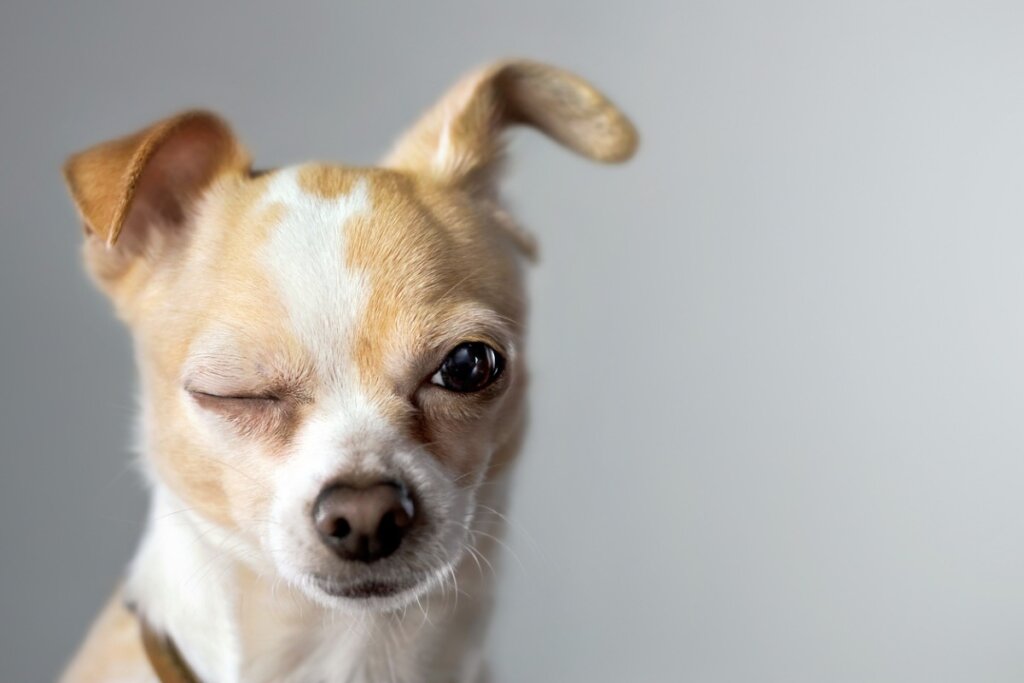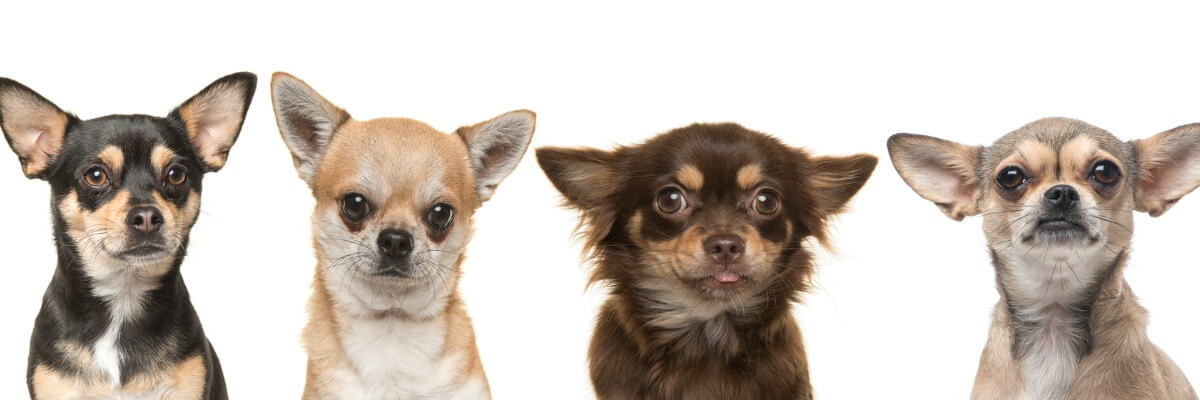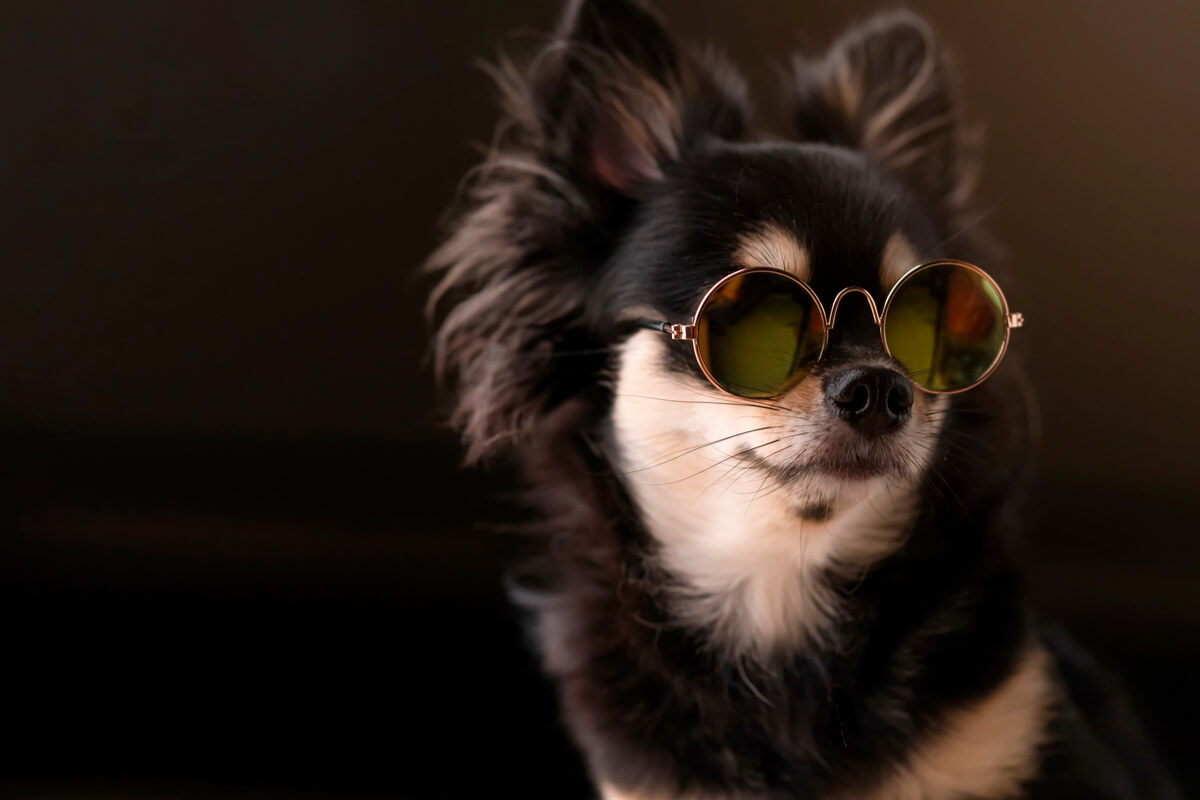Chihuahua Colors: All You Need to Know

Chihuahuas are a lovely breed of dog and have a number of colors and markings that make them unique. These dogs are considered one of the smallest in the world, and it’s common to see their guardians carrying them in bags or briefcases. Find out all about chihuahua colors in today’s article!
Although there’s a wide range of colors and variety in the chromatic markings of Chihuahuas, not all combinations have the recognition of international federations. Because of that, in this article we’re going to talk about the accepted shades and tones, those not recognized, and the most common and strange ones in this breed. Don’t miss it!
Chihuahua colors accepted by the FCI
The Fédération Cynologique Internationale (FCI) explains that there are two varieties of the Chihuahua, the short-haired and the long-haired – the latter stands out for its fine, silky, straight, or wavy coat. The dog gets its name from the state of Chihuahua, where its ancestor is believed to have lived in the wild.
In their letter published in 2019, the FCI is emphatic in pointing out that all colors, markings, and combinations of the Chihuahua are recognized. However, the organization makes it clear that only one exception – the Merle Chihuahua – isn’t accepted at an international level.

The Merle Chihuahua – why isn’t it accepted by the FCI?
As we mentioned, the Merle Chihuahua isn’t accepted by the FCI. These dogs have a spotted coat and have very conspicuous markings, which are more common in breeds like the Border Collie. The reason why this variety isn’t accepted is that the spots are related to the presence of a gene that causes different health problems.
Professional articles explain that the dominant gene M or Merling is responsible for the appearance of this type of coat, common in different breeds of dogs. They explain that crossing two Merle Chihuahuas is risky, because a part of the litter (about a quarter) may develop deafness and eye defects such as microphthalmia.
Microphthalmia is a birth defect that can damage both eyes or one eye and prevents the correct development of sight.
Can Chihuahuas change color?
The color and markings of the Chihuahua can change, especially after the first shedding, when the dog is still a puppy. Thus, sabling types may darken or lighten and brindle coloring may fade or darken, while tan usually lightens a little, taking on a beige or golden color.
Most Chihuahuas maintain their tone after the first year. However, some subtle changes may occur in older Chihuahuas.
AKC Chihuahua Colors
The American Kennel Club (AKC) recognizes a wide range of colors and markings in the Chihuahua, with more than 30 varieties. The AKC accepts Chihuahuas with solid coats in colors such as black, blue, brown, chocolate, cream, fawn, red, and others.
In the same way, dogs whose coats are spotted or with splashes of the colors mentioned are accepted.
Alternative colors of Chihuahuas
The AKC also proposes a list of colors in the Chihuahua that have been called alternative, among which we find the following combinations:
- Black and red, black and silver, black and white
- White
- Cream and white
- Red and white
- Silver and silver with white
- Gold and gold with white
- Fawn brindle black
- Chocolate and white, chocolate blue, chocolate fawn brindle, and chocolate fawn with sable
- Blue, blue and white, blue fawn brindle, blue fawn, and blue merle
- Black, fawn, and sable or silver fawn black
Rare Chihuahua colors
Despite the fact that there are many accepted and alternative colors in the Chihuahua, there are a couple that are extremely rare. This makes them difficult dogs to obtain and they tend to sell for high prices. Among them are the following:
- Jet black: The jet black Chihuahuas don’t have any type of markings, because as their name indicates, their tone is unicolor.
- Lavender/lilac: This is a color that derives from the intense brown or chocolate tone, which seems diluted or washed, giving way to a grayish tone that is recognized as lavender or lilac. The lilac Chihuahua has a coloration dictated by the dilution gene in one of the parents.
- Tabby: This brindle pattern appears on a black base that, according to the AKC, usually occurs in a combination of fawn with blue, chocolate, or black.
- Pure white: To be considered pure white, the Chihuahua mustn’t have any spots or markings on the coat. The only parts permitted to have other colors are the nose, nails, and eyes. Only two pure white parents can produce puppies of this rare shade.

Chihuahua markings
Chihuahuas don’t only come in solid or combination colors, as they often have markings that are also recognized by the AKC. These are divided into standard and alternative color markings. Among the standard Chihuahuas are the following:
- White markings or splashes
- Merle
- Black mask
- Fawn black
- Black brindle
On the other hand, here are the alternative colored chihuahua markings:
- Red
- Cream
- Fawn
- Black mask and white markings
- Blue mask

Chihuahua markings also come in a wide variety of shapes, sizes, and can appear on any area of the body. Regardless of whether we’re talking about colors, combinations, or markings, the chihuahua comes in a myriad of options. All the dogs that belong to this breed are beautiful, small, and very playful.
All cited sources were thoroughly reviewed by our team to ensure their quality, reliability, currency, and validity. The bibliography of this article was considered reliable and of academic or scientific accuracy.
- Taking a Look at Merle Coat Pattern in Chihuahuas. Chihuahua Update. Vol. 4, Núm. 2, 2005.
- Chihuahueño. Federation Cynologique Internationale. 2019.
- Chihuahua. American Kennel Club.
